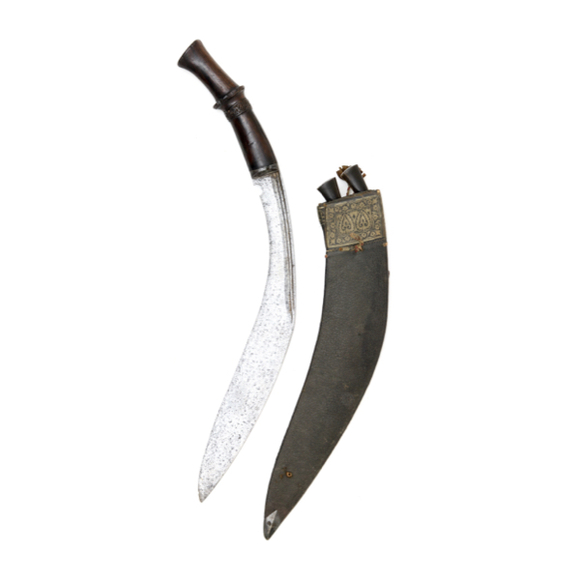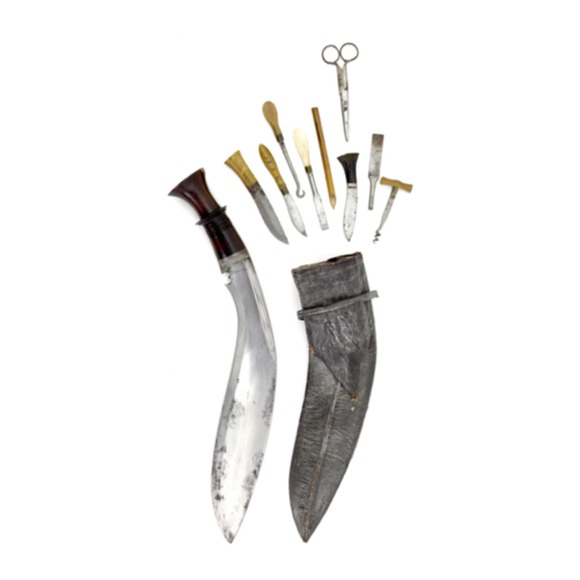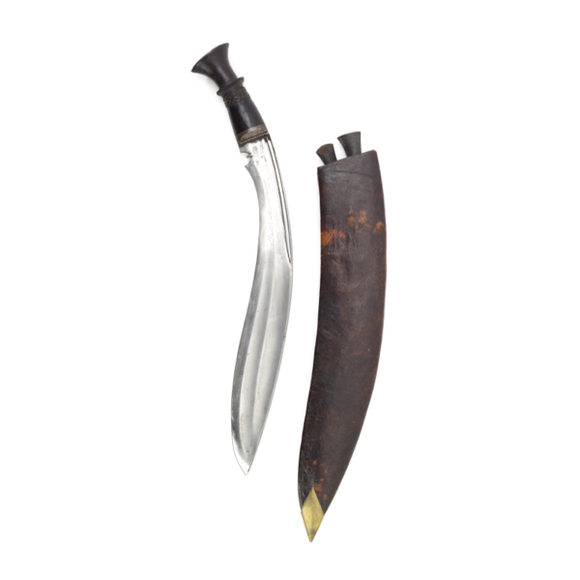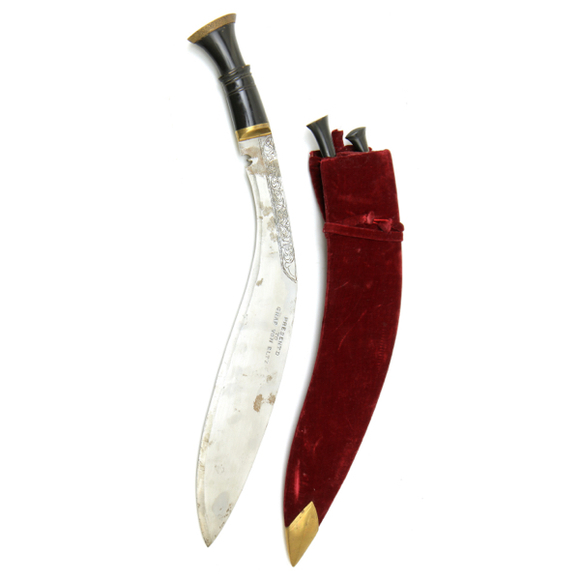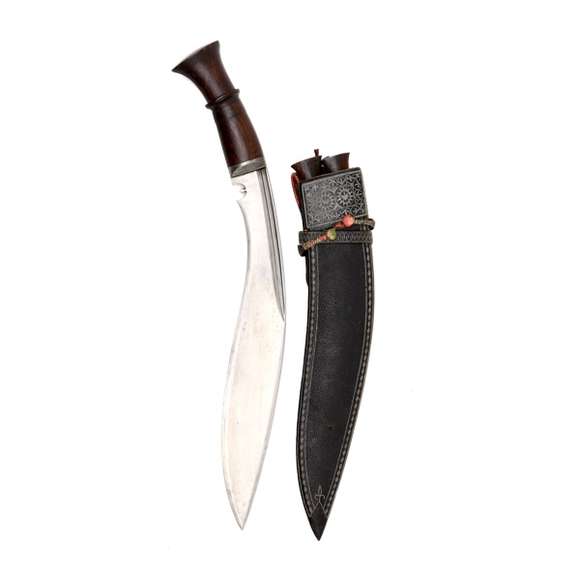Language: Nepali
Source: A 1931 dictionary
Description
Mākhe buṭṭā (माखे बुट्टा); Ornamentation consisting of lines of small dots.1
Mākhe means "pertaining to flies or like flies", while buṭṭā can mean embroidery, braid, and filigree.
Ornamentation that fits this description is sometimes seen in the fine quillwork on some mid 19th-century khukurī scabbards.

Fine embroidery using strips of quill on a mid 19th-century khukurī.
Some of the work is in the dotted lines called mākhe buṭṭā.
It is also seen in the filigree work on the silver scabbard mounts of some kothimora khukurī.

Braided work in fine silver wire, and rows of dotted work on the scabbard of a kothimora khukurī.
Notes
1. Sir Ralph Lilley Turner; A comparative and etymological dictionary of the Nepali language. London: K. Paul, Trench, Trubner, 1931.


